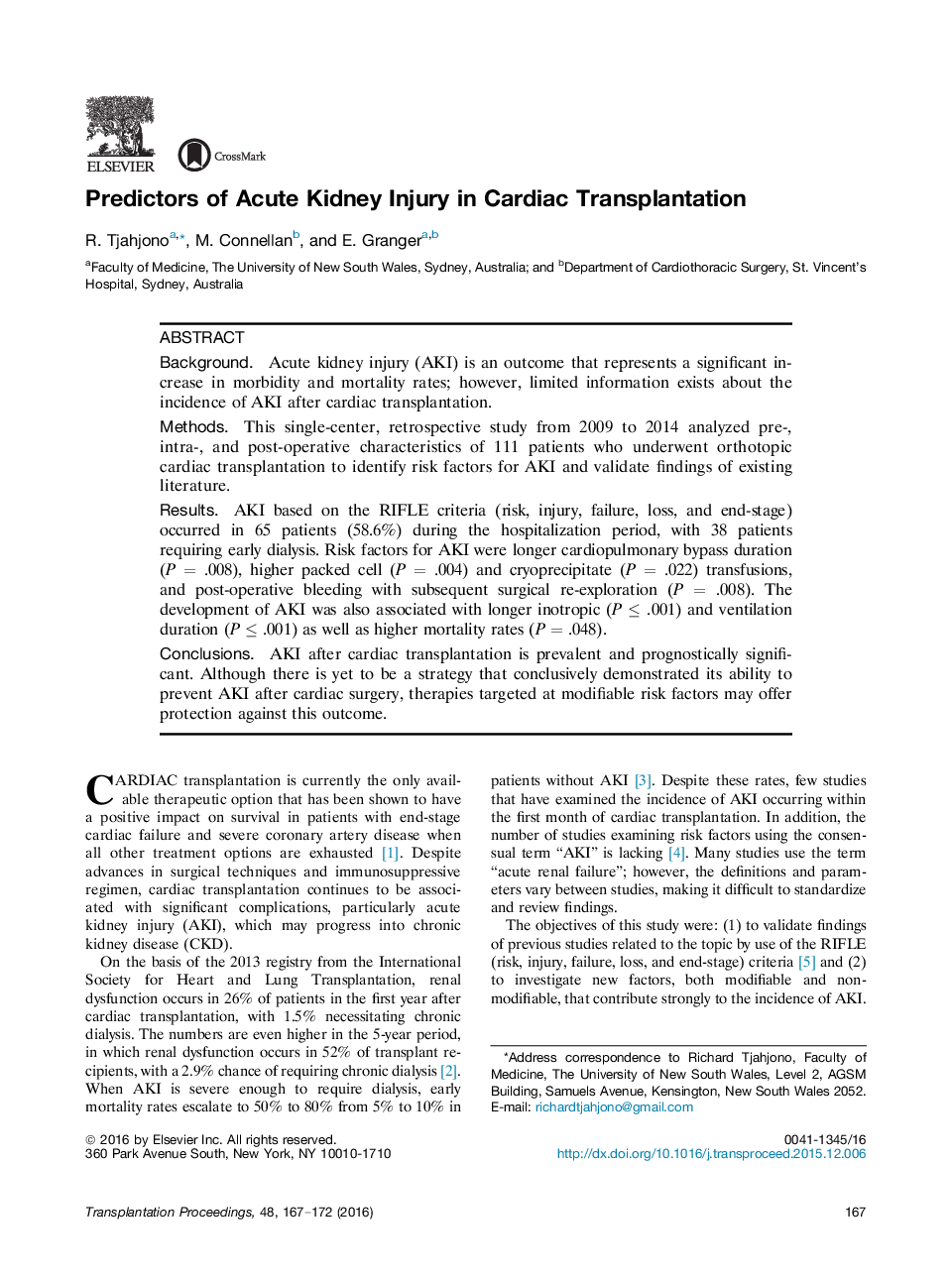| Article ID | Journal | Published Year | Pages | File Type |
|---|---|---|---|---|
| 6247063 | Transplantation Proceedings | 2016 | 6 Pages |
â¢Many of the risk factors for acute kidney injury after orthotopic heart transplantation in this study, such as cardiopulmonary bypass time and number of transfused packed cells, are consistent with findings from established literature.â¢The development of acute kidney injury is also associated with a longer inotropic and ventilation duration.â¢Every patient who had post-operative bleeding and required surgical re-exploration had acute kidney injury.
BackgroundAcute kidney injury (AKI) is an outcome that represents a significant increase in morbidity and mortality rates; however, limited information exists about the incidence of AKI after cardiac transplantation.MethodsThis single-center, retrospective study from 2009 to 2014 analyzed pre-, intra-, and post-operative characteristics of 111 patients who underwent orthotopic cardiac transplantation to identify risk factors for AKI and validate findings of existing literature.ResultsAKI based on the RIFLE criteria (risk, injury, failure, loss, and end-stage) occurred in 65 patients (58.6%) during the hospitalization period, with 38 patients requiring early dialysis. Risk factors for AKI were longer cardiopulmonary bypass duration (P = .008), higher packed cell (P = .004) and cryoprecipitate (P = .022) transfusions, and post-operative bleeding with subsequent surgical re-exploration (P = .008). The development of AKI was also associated with longer inotropic (P ⤠.001) and ventilation duration (P ⤠.001) as well as higher mortality rates (P = .048).ConclusionsAKI after cardiac transplantation is prevalent and prognostically significant. Although there is yet to be a strategy that conclusively demonstrated its ability to prevent AKI after cardiac surgery, therapies targeted at modifiable risk factors may offer protection against this outcome.
